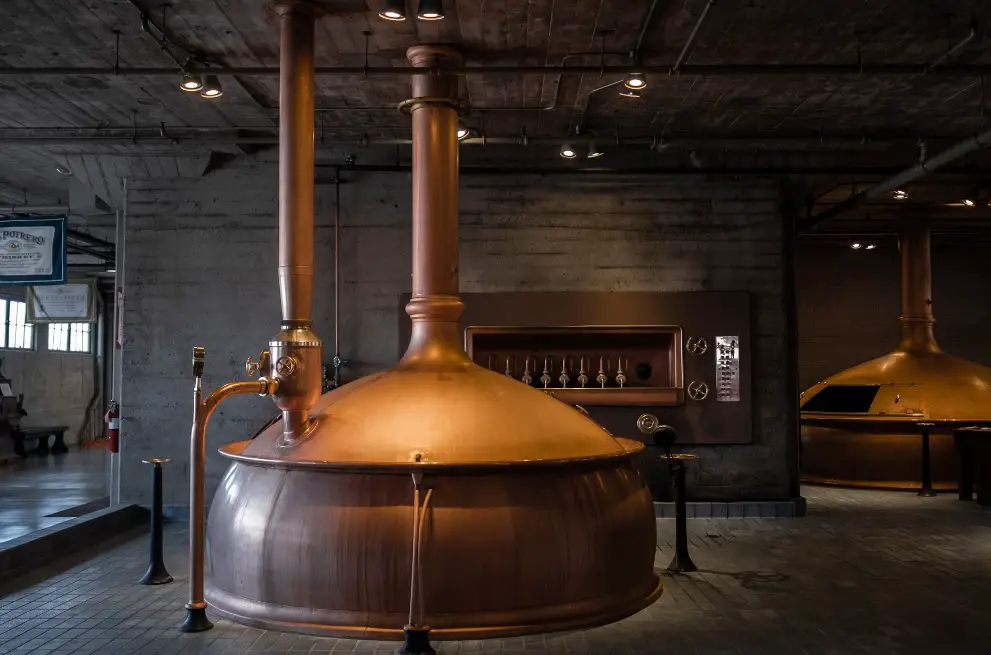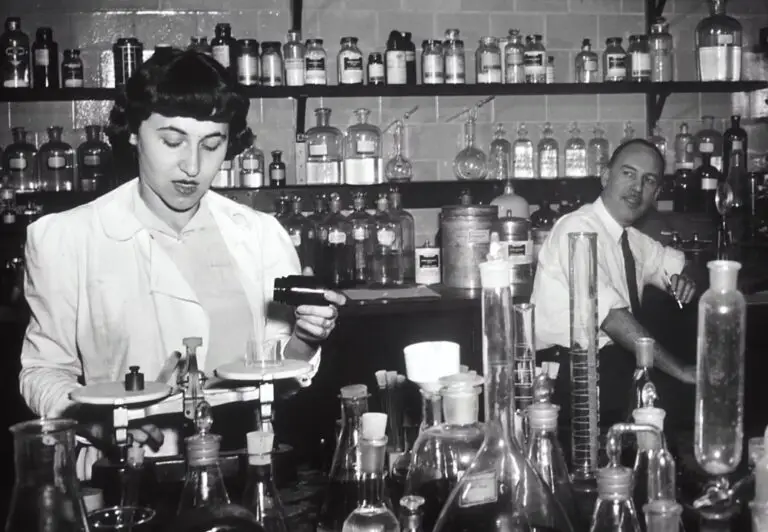Does Beer Have Oxalates?
Oxalates? Does beer have oxalates? Let’s see!
The short answer is YES, beer does contain oxalates, albeit in varying amounts depending on the type of beer. Oxalates are naturally occurring compounds found in many foods and beverages, and beer is no exception.
Follow us on Instagram!
The oxalate content in beer can range from approximately 4 to 10 milligrams per liter, with dark beers generally containing higher levels than lighter ones.
While the absolute oxalate concentration in beer may not be exceptionally high compared to certain foods, it is a factor to consider for individuals who need to monitor their oxalate intake due to health concerns, such as kidney stones.

How Much Oxalates Are In Beer?
Let’s take a look at how much oxalates are in each beer style:
- Light Beers: around 4-6 milligrams per liter
- Pale Ales: approximately 6-8 milligrams per liter
- Amber Ales: typically ranges from 8-10 milligrams per liter
- Dark Beers (Stouts, Porters): can be higher, averaging between 10-12 milligrams per liter
The normal daily intake of oxalates can vary among individuals, and there isn’t a universally defined “normal” intake level.
However, some general guidelines suggest that a typical diet may include approximately 150 to 200 milligrams of oxalates per day.
Oxalates-rich foods are leafy greens (spinach, kale, or beet greens), nuts (almonds, peanuts, and cashews), fruits (berries, grapes, or kiwi), and other vegetables.

What Are Oxalates? Why Are Oxalates Important? Are Oxalates Dangerous?
Oxalates are naturally occurring compounds found in various plant foods, and they play a role in the body’s metabolism. There are two main types of oxalates: soluble oxalates and insoluble oxalates. Soluble oxalates can dissolve in water, while insoluble oxalates do not.
Oxalates are important for plants as they act as a defense mechanism against herbivores and pests. In the human body, oxalates can bind with minerals like calcium and form crystals. While this is a normal process, excessive intake or certain medical conditions can lead to the accumulation of these crystals, potentially resulting in the formation of kidney stones.
While oxalates are not inherently dangerous, high levels in the body can contribute to the development of kidney stones, particularly calcium oxalate stones. For individuals prone to kidney stones, managing oxalate intake through a balanced diet and adequate hydration is crucial.

Oxalates In Beer
Oxalates in beer are a result of complex interactions during the brewing process, and their presence can be influenced by various factors. Understanding how oxalates appear in beer involves examining the raw ingredients, the brewing stages, and the conditions under which fermentation occurs.
Raw Ingredients:
- Malt: Malted grains, such as barley, are a primary ingredient in beer. The malting process involves germinating and drying grains. Some malted grains contain oxalates naturally.
- Water: The oxalate content in water used during brewing can contribute to the overall oxalate levels in beer.
Brewing Process:
- Mashing: The malts are mixed with hot water during mashing to extract fermentable sugars. This process can release oxalates from the malt into the liquid.
- Boiling: The wort (liquid extracted from mashing) is boiled with hops. Boiling may affect the solubility of oxalates, leading to their presence in the final beer.
Fermentation:
- Yeast Activity: Yeast fermentation involves the conversion of sugars into alcohol and carbon dioxide. Some studies suggest that yeast metabolism can influence oxalate levels in beer, but the exact mechanisms are not fully understood.
Factors Influencing Oxalate Levels:
- Malt Type: Different malts have varying oxalate contents. Darker malts often contribute more oxalates to the beer than lighter malts.
- Brewing Time and Temperature: Prolonged mashing or boiling times and high temperatures may affect oxalate solubility and concentration in the final product.
- Water Quality: The oxalate content in brewing water can impact the overall oxalate levels in beer.

Oxalates In Different Beer Styles
Overview of Various Beer Types
Beers can be broadly categorized into light beers, pale ales, amber ales, and dark beers such as stouts and porters. Each type is distinguished by factors like malt type, brewing methods, and the presence of additional ingredients like hops or spices.
Comparative Analysis of Oxalate Levels
Conducting a comparative analysis allows us to observe the range of oxalate levels across different beer types.
Generally, light beers and pale ales tend to have lower oxalate concentrations, ranging from approximately 4 to 8 milligrams per liter. In contrast, dark beers, characterized by the use of roasted malts, may have higher oxalate levels, often falling between 8 and 12 milligrams per liter. This analysis provides consumers with insights into the oxalate content of their preferred beer styles.

Factors Affecting Oxalate Variation in Beers
Several factors contribute to the variation in oxalate levels among different beers:
- Malt Composition: The type of malt used significantly influences oxalate content. Darker malts, common in stouts and porters, contribute more oxalates than lighter malts used in pale ales or lagers.
- Brewing Methods: Differences in brewing techniques, such as mashing and boiling durations, impact the extraction and solubility of oxalates from malted grains.
- Yeast Strain: While the exact role of yeast in oxalate formation is not fully understood, variations in yeast strains may contribute to differences in oxalate levels.
- Water Quality: The oxalate content in brewing water, which varies based on its source and mineral composition, also plays a role in the overall oxalate concentration in the final beer.
Myths About Oxalates In Beer
Myth: All Beers Have High Oxalate Levels
Reality: Oxalate levels vary among beer types. While dark beers may have higher oxalate concentrations, lighter options generally contain lower amounts.
Myth: All Oxalates in Beer Are Harmful
Reality: Oxalates are naturally occurring compounds, and moderate consumption in beer is not inherently harmful for most individuals. It’s excessive intake or specific health conditions that may pose concerns.
Myth: Drinking Beer Leads to Kidney Stones
Reality: While high oxalate intake can contribute to kidney stone formation, the overall risk from moderate beer consumption is generally low. Factors such as hydration and individual health play significant roles.
Myth: Dark Beers Are Unhealthy Due to Oxalates
Reality: Dark beers, which often have higher oxalate levels, also offer various health benefits, including antioxidants and certain nutrients. Consuming them in moderation can be part of a balanced lifestyle.
Myth: Oxalate-Free Beers Exist
Reality: Oxalates are naturally present in many plant-based ingredients used in brewing. While some beers may have lower oxalate levels, achieving complete oxalate absence in beer is unlikely.

Beer And Kidney Stones
Relationship Between Oxalates and Kidney Stones
The relationship between oxalates in beer and the formation of kidney stones is a topic of interest. Oxalates, when present in high concentrations and combined with calcium, can form crystals that contribute to the development of kidney stones.
However, the link between dietary oxalates, including those in beer, and kidney stones is complex. Other factors such as overall diet, hydration, and individual susceptibility play crucial roles in stone formation.
Beer Consumption and Kidney Stones
Research on the specific impact of beer consumption on kidney stones is limited but suggests potential protective effects. Some studies propose that certain compounds in beer, such as hops and polyphenols, may counterbalance the stone-forming properties of oxalates.
Additionally, the diuretic effect of moderate alcohol consumption, including beer, may contribute to increased urine volume, potentially reducing the risk of stone formation.
Experts on Beer and Kidney Health
Expert opinions on the relationship between beer and kidney health vary.
While excessive alcohol consumption is generally discouraged due to its potential negative impact on the kidneys, moderate beer consumption is often considered safe for most individuals. Some experts suggest that the diuretic properties of beer, combined with its fluid content, may have a protective effect against kidney stones.
However, individual health conditions and overall lifestyle factors should be considered, and it’s advisable to consult healthcare professionals for personalized advice.

Wrapping It Up
In conclusion, the presence of oxalates in beer is a reality, with levels varying across different beer types. While dark beers generally contain higher oxalate concentrations, moderate consumption is unlikely to pose significant health risks for the majority of individuals.
Regarding kidney health, the relationship between beer consumption and kidney stones is complex, with potential protective factors identified in some studies.

I am a young architect with a passion that goes beyond blueprints… it’s beer! undertherosebrewing.com is more than just a blog, it’s a manifestation of my lifelong dream to explore, read, and learn everything about beer. Join the blog on this unfiltered and genuine adventure into the heart of beer culture. Cheers!





